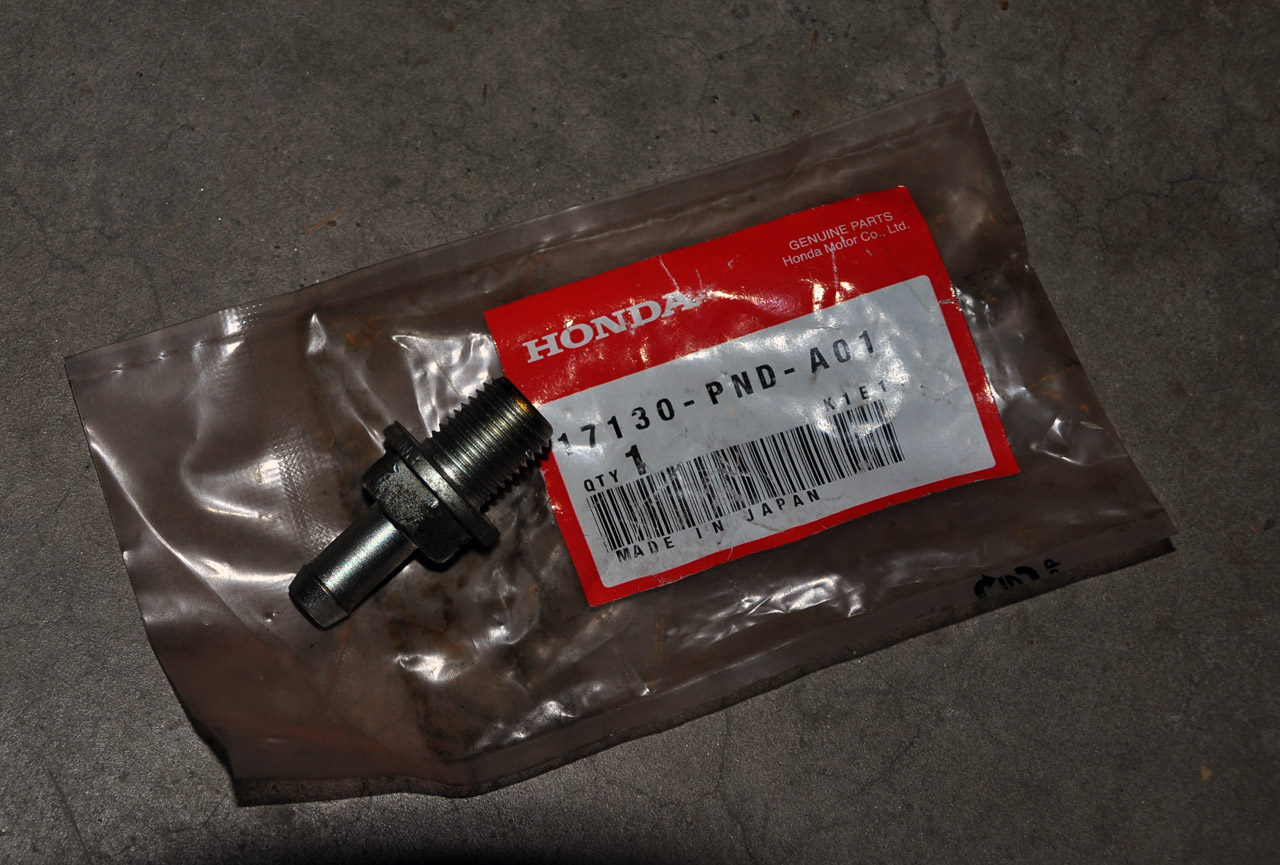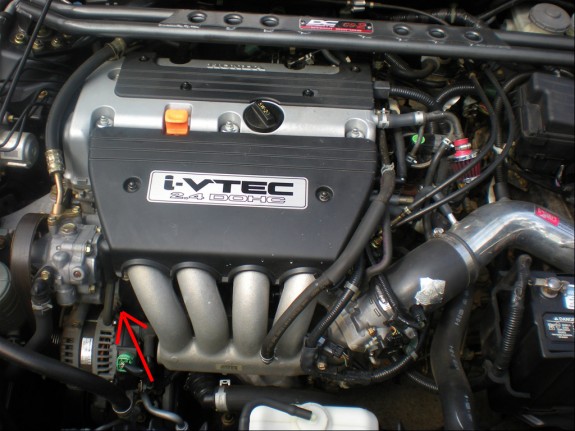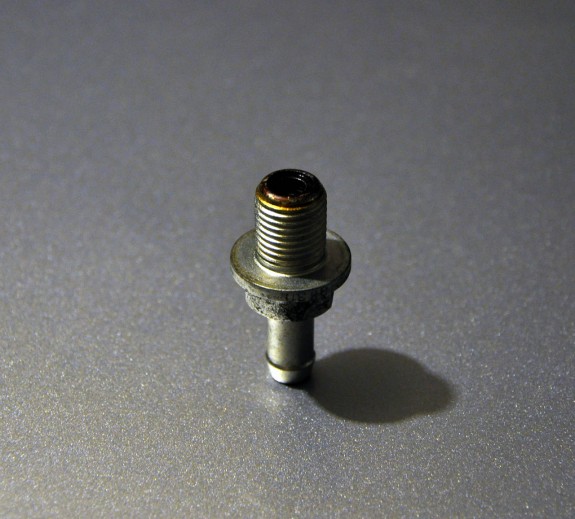Obscure Maintenance: PCV Valve

The average age of vehicles on the road today has steadily increased for numerous reasons. Better lubrication, better reliability, and a bad economy can all be cited as factors. That’s why we’ve decided it’s time to start a series on obscure maintenance items – things that may be forgotten as the years pass by on a typical vehicle. Tires, brakes, engine oil, belts, wipers – those are replaced with some regularity and don’t count. This series is for components that many people, even true car enthusiasts can forget about – like the PCV valve.
I’d venture to guess that not many people have ever replaced a PCV valve, not even car enthusiasts and professional mechanics. Many people view it as unnecessary, and no wonder – replacing the Positive Crankcase Ventilation valve is not often part of a maintenance regimen. That’s because they don’t generally fail catastrophically. But I personally have replaced a couple, and plan to do several more before my time is up on this green Earth. Why spend the money? To truly understand why it’s worth it, you must first understand what the PCV valve does.
The Positive Crankcase Ventilation valve allows any pressure buildup in the engine’s crankcase to vent into the intake manifold. It could vent into the atmosphere, but government agencies like the EPA generally dislike putting unregulated exhaust blow-by or hydrocarbon emissions directly into the air we breathe. The device is very simple, and can sometimes be made of plastic (as in my Mazda), and sometimes out of metal alloys (as in my Honda). It works with a simple ball and spring mechanism, and the vacuum in the intake manifold at idle pulls the ball closed against the spring. At higher throttle openings, the intake manifold vacuum decreases, and allows crankcase pressure to vent through the valve. It’s an elegant solution to a complex problem.
Wait, what problem? Well, the problem is, if you don’t allow that crankcase pressure to vent, it eventually causes oil leaks around seals or rings. On the other hand, if you have no valve and just vent it directly into the manifold without any restrictions, it can cause too much air to flow into the cylinders without enough fuel – that will make the engine run very rough. By adding the PCV valve and adjusting the fine-tuning the tension on the spring, a good medium between a direct vent and a completely closed system can be achieved. The best part is that the PCV valve, unlike many other emissions devices on cars, requires no computer monitoring or expensive sensors. The Mazda’s plastic-housed valve cost $8, and the Honda’s metal-housing valve cost $16. That’s it!
However, just because something is cheap, doesn’t mean it should be replaced at regular intervals if it’s not necessary. So what’s the big deal? The problem is, these are mechanical devices with tight tolerances. They can stick open or closed if enough crap goes through them. Then the engine will most likely run rough, or worse, start to burn its own engine oil in place of gasoline. If you need an example of why this is a big deal, surf any Mazda6 forum and look for how many engines have been replaced. It’s common for their PCV valves to stick, causing the engine to eat its entire 6 quarts of oil within 2,000 miles – less than half of the 5,000 mile oil change intervals. And, as we know, engines running with no oil aren’t long for this world. $8 valve. $6000 engine. I replaced the Mazda’s twice in 22,000 just to safe, and my Honda’s was changed out with the 110,000 mile service.
The naysayers out there have several arguments. Yes, it is less common for PCV valves to fail now that oils and filtration are better, causing less buildup in the PCV valve (which will lead to sticking). That’s true, but that’s why it’s called preventative maintenance. You replace an $8 part in hopes that it will prevent a $6000 catastrophe. Their second argument is that you can check to see if a PCV valve is working correctly – that is a false assumption. Most people stop at the rattle test – most PCV valves will rattle around (if you shake them) when the engine is off. But that is a horrible test, the valve can still stick when the engine turns on, and not all PCV valves are designed to rattle (my Honda’s is a prime example). There are other methods used to test for PCV valve function, but really, is it even worth your time to spend 15 minutes testing such a cheap valve? I would suggest just replacing these every 30,000 miles instead. It’s the cheapest insurance around.



